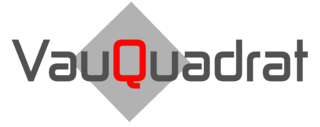That's what everyone wants to know
FAQs
Is it true that screw connections can be opened by heating the nut?
No, at least not only!
The working principle is FAST heating by induction from the inside. As a result, the grid connection or the seizing breaks open at the transition points such as the thread. It works in the same way if you can only reach the screw head! Apply a heat shock, wait a little, the screw will open as it cools down.
Does the inductor get hot?
No, coolant flows through it and it hardly heats up at all.
Can steel also be melted with induction?
Actually just thin sheet metal, by mistake. If not handled properly, so much heat builds up there so quickly that you burn a real hole in it. As soon as the steel has a certain thickness, bright red heat is the end of the story, as a balance is established with the decreasing conductivity so that the temperature does not rise any further.
Does a deep induction device also work with metals other than steel?
Due to the eddy currents as the active principle, deep induction works on all materials that are electrically conductive.
Does this also work with plastic?
No, the principle is based on the fact that current can flow in the target area, so the material must be conductive. This effect can be used by heating the carrier metal through bonded materials such as glass, plastic or stickers and the adhesive dissolves without leaving any residue.
Why does the machine have to be so big and heavy?
Most of the design and weight comes from the WATER COOLING. There are also smaller, non-cooled devices, but you can’t do much with them in the workshop!
Are there differently shaped attachments for the inductor?
No. This is done with the much smaller devices mentioned above. If spot heating is required for use in the car body shop, this can be easily achieved using the spacer. For flat applications, you can attach the Teflon cap and simply heat the surface with circular movements.
What about structural changes and loss of hardness, especially on steering components, don't the manufacturers want to use heat?
First of all, the generation depth of the deep induction means that the usual uncontrollable surface temperatures do not occur. We attach great importance to the fact that only specialist equipment is used. Our customers have qualified straightening preheating and dissolving processes with tempered steel, armor steel, duplex or nickel-based materials. In these cases, we strongly recommend that you take advantage of our application know-how.
Can the temperature be regulated?
If you find a way to measure the resulting temperature directly, you can, for example, connect a Siemens S7 PLC controller to the device. A temperature control can be implemented in the S7 in the simplest way using a driver module provided. BUT except for brazing aluminum, this has never really been necessary. Thermal straightening of fine-grained steel 50 CrMo 4, preheating processes of thick S690 QL or even the brazing of mixed joints of chromium-nickel steel to copper have been used by our customers for many years without any temperature control.
Can hardened screws also be opened with induction?
You can open it. However, hardened materials that have been heated above +250°C should then be replaced with new ones. The hardening properties have changed due to tempering effects.
Are there different inductors for the devices?
Yes, the inductors are designed and built at VauQuadrat. On the one hand, you can choose from more than 100 existing variants. Whenever necessary, a special variant is also possible within a very short time.
